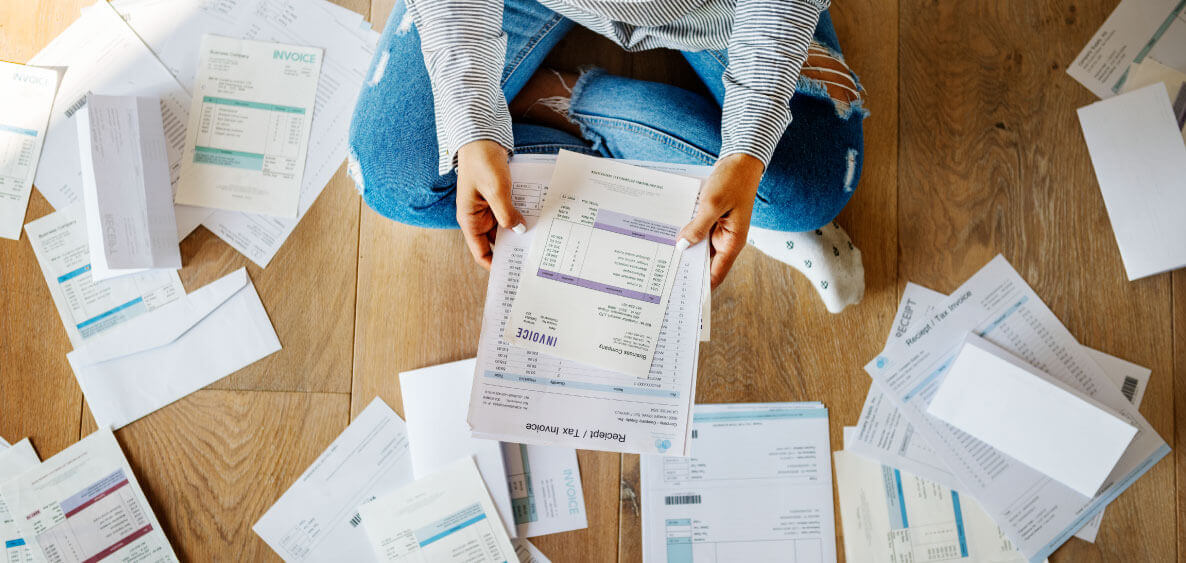
Financial well-being January 12, 2023 By
Escaping debt is a crucial element of Financial Well-Being. According to the most recent data from the American Bankers Association, Americans carried a balance on 53% of all active credit card accounts in the second quarter of 2022. For some households, debt is a burden that has them dodging creditors' calls and struggling to pay the minimum monthly payments. If you're overwhelmed by debt or just ready to be debt free, then keep reading, as we want to share two proven strategies to help you on your debt-free journey.
The "Debt Snowball" and the "Debt Avalanche" strategies are two options to help you focus on applying the most money possible to the lowest balance (snowball) or the highest interest rate (avalanche), all while paying the minimum monthly payment on all other loans.
Debt Snowball
Becoming debt-free can feel impossible, but the debt snowball has two advantages. First, it provides you with a clear plan. Second, you will be able to start marking progress quickly.
The goal of the debt snowball is to pay off the smallest debt first.
To create a debt snowball, you will list your debts in order of amount owed – from smallest to largest based on your payoff balances. Note: You will not include your mortgage loan; you can focus on that after all other debt is paid off.
Each month, make the largest payment you can afford to the debt with the lowest balance (throw every dollar you can at it until it's gone). Continue making only the minimum monthly payments on all other debts. When the smallest debt is paid off, repeat the process with the next smallest amount owed. With each payoff, be sure to add the previous payment from the paid-off debt to the minimum payment you've been paying on the existing debt so the payment keeps getting bigger.
The debt snowball will help get you out of debt while giving you some quick wins and building up momentum, which can help you stay focused as you work through your list of debts. The snowball has human psychology on its side. This is truly about behavior modification.
Debt Avalanche
If you're more of a numbers person and want to save the most money overall, the debt avalanche method is a better option.
The goal of the debt avalanche method is to pay less interest overall.
To create a debt avalanche plan, list debts from the highest interest rate to the lowest interest rate. Note: You will not include your mortgage loan initially, as you can focus on that after all your other debt is paid off.
Each month, make the largest payment you can afford to the debt with the highest interest rate (just like the snowball method, you will throw every dollar you can at it until it's gone). Continue making minimum monthly payments on all other debts. When the debt with the highest interest rate is paid off, repeat the process by paying off the debt with the next highest interest rate (use the payment amount from the paid-off card for the next debt you are tackling so that your new payment amount keeps getting bigger.
The debt avalanche has math on its side. Also, this method generally pays less interest, thereby saving money.
Tips for Escaping Debt
- If you're in debt, stop borrowing and begin paying with a debit card or cash instead. We must stop the bleeding and live on a budget.
- When you have more expenses than income, you have three options: 1) earn more income, 2) spend less by cutting down on your wants and sticking to your needs 3) try a combination of one and two.
- Try your best to pay more than the minimum required monthly payment (using the snowball or avalanche strategy) to get yourself out of debt. Consider selling things you do not need to bring in some extra income.
- Look for a credit card with a lower interest rate and do a balance transfer, if possible. Note that you still cannot borrow your way out of debt. Budgeting is the key.
- Seek assistance from a Financial Coach. A coach can support you, provide tools, and be an accountability partner during your debt-free journey. First United Bank offers free financial coaching.
- When you pay off a debt, put that money toward paying off the next one. This is what makes any debt elimination method work fast. Only increase your spending once your debt is paid off.
- Save for purchases rather than using credit. If you can't afford to pay cash for it, wait and save until you can. Start with a small goal, then keep increasing it with time. The joy of paying for something you have saved up to buy can be very rewarding.
Which method is best for you?
The key to becoming debt-free is sticking with a plan. The snowball method is incredibly appealing when you want to taste success quickly because your focus narrows overtime on the biggest debts. If you need quick wins, then the snowball might be best for you. But there is no disputing that you will save more money if you use the avalanche method and have the discipline to stick to it. If you don't need the psychological boost of the snowball, consider utilizing the avalanche and attack those high-interest rate balances first.
For more information, please feel free to contact us at financialwellbeing@fub-online.com, or check out these free calculators to help you start paying off debt:




